Oral
Diffusion: Microstructure
ISMRM & ISMRT Annual Meeting & Exhibition • 10-15 May 2025 • Honolulu, Hawai'i

| 13:45 |
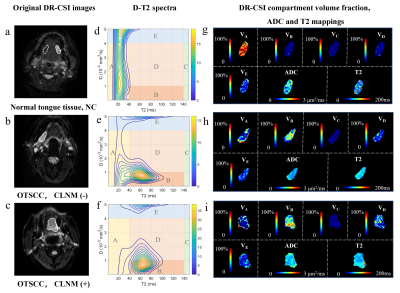 |
0126. DR-CSI
for In Vivo Tumor Heterogeneity and Lymph Node Metastasis
Prediction in Oral Tongue Squamous Cell Carcinoma
Y. Dai, S. Li, W. Hu, D. Wu, P. Hu, Y. Wu
ShanghaiTech University, Shanghai, China
Impact: DR-CSI
enables detailed in vivo mapping of tumor microstructure in
OTSCC, facilitating precise lymph node metastasis prediction
and offering a powerful tool for non-invasive risk
stratification. Its use could improve staging accuracy and
optimize treatment planning for OTSCC.
|
| 13:57 |
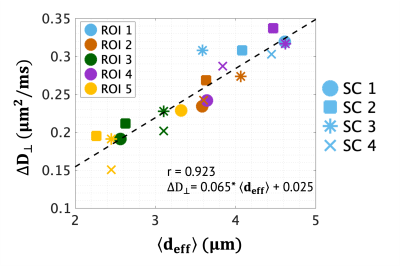 |
0127. Experimental
investigation of a simple estimate of axon size

H. Alderson, M. Does, K. Harkins
Vanderbilt, Nashville, United States
Impact:
Diffusion time difference in radial diffusivity is shown in this work to correlate well with histology derived axon diameter. Importantly, it is straightforward to measure and therefore provides a simple estimate of axon diameter. |
| 14:09 |
 |
0128. Combination
of MR Cell Size Imaging and Magnetization Transfer Imaging to
Predict Intestinal Disease Progression in Crohn’s Disease
X. Wang, L. Huang, R. Mao, Z-w Zhang, X. Shen, Q. Zheng, R.
Zhang, Y. Wang, L. Wu, Y. Ke, C. Zhao, M. Wang, Z. li, Z.
Peng, C. h. Sun, S-t Feng, X. Li
The First Affiliated Hospital, Sun Yat-Sen University, Guangzhou, China
Impact: TD-dMRI-derived d effectively characterizes
fibrosis-associated cellular microstructures in patients
with CD, and combined with normalized MT ratio enables a
comprehensive assessment of intestinal fibrosis and thus
accurate prediction of disease progression.
|
| 14:21 |
 |
0129. Reducing
the NEXI acquisition time for the quantification of human gray
matter microstructure on the CONNECTOM 2.0 scanner

Q. Uhl, T. Pavan, J. Gerold, K-S Chan, Y. Jun, A. Bhatt,
Y. Ma, H-H Lee, S. Huang, B. Bilgic, I. Jelescu
CHUV, Lausanne, Switzerland
Impact: We demonstrate an effective method for reducing
Neurite Exchange Imaging acquisition time on the CONNECTOM
2.0 scanner. This approach has potential for broader
application on clinical scanners in routine neuroimaging,
facilitating gray matter microstructure insights in patient
populations.
|
| 14:33 |
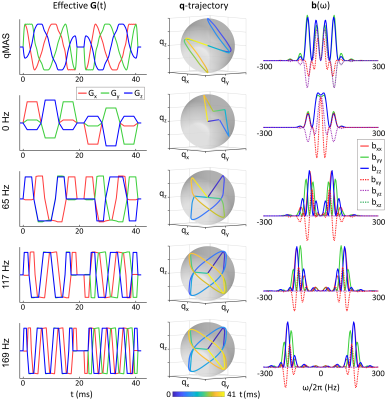 |
0130. Disentangling
microscopic anisotropy and diffusion time dependence in the
brain using oscillating gradients with spherical b-tensor
encoding
M. Aggarwal, L. Jantzie
Johns Hopkins University School of Medicine, Baltimore, United States
Impact: We demonstrate that oscillating spherical and
linear b-tensor encoding waveforms allow mapping of
frequency-dependent isotropic diffusivity, diffusional
variances, and μFA in the brain. The results are important
to understand the effects of spectral content of the
waveforms in tensor-valued dMRI.
|
| 14:45 |
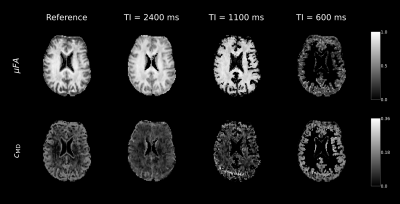 |
0131. Inversion
Recovery-Prepared Q-Space Trajectory Imaging of the Human Brain

O. Goedicke, J. Yu, F. B. Laun, M. E. Ladd, T. A. Kuder
German Cancer Research Center (DKFZ) Heidelberg, Heidelberg, Germany
Impact: Partial
volume effects substantially impact the value distribution
of QTI-derived microparameters in the human brain. Inversion
recovery preparation could improve the accuracy and
interpretability of such parameters. IR-QTI may therefore
advance the microstructural characterization of healthy and
diseased tissue.
|
| 14:57 |
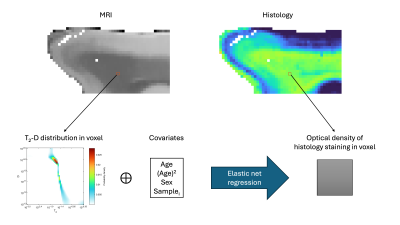 |
0132. Virtual
histology of Alzheimer’s disease pathology in the ex vivo human
brain using diffusion-T2 relaxation correlation multidimensional
MRI
E. Manninen, C. Comrie, E. Hutchinson, G. Serrano, D.
Benjamini
National Institute on Aging, Baltimore, United States
Impact: Ex vivo diffusion-T2 relaxation
correlation MRI can be used to detect multiple Alzheimer’s
disease pathologies. This approach could lead the way for
advanced in vivo characterization of pathologies related to
aging and dementia.
|
| 15:09 |
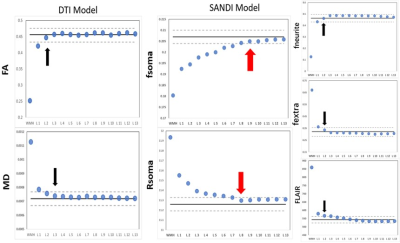 |
0133. SANDI-Based
Analysis of White Matter Hyperintensity Penumbras in Post-Stroke
Patients at 5.0T MRI

Y. Li, H. Zhang, L. Wang, S. Xu, H. Wang, H. Li
Institute of Science and Technology for Brain-inspired Intelligence,Fudan University, Shanghai, China
Impact: This study demonstrates SANDI’s capability on 5T
MRI for detecting white matter hyperintensity penumbras in
post-stroke patients, offering a promising biomarker for
early white matter damage and advancing clinical stroke
assessments through microstructural insights.
|
| 15:21 |
 |
0134. MR
hydrophysiology reveals multiple exchange pathways in neural
tissue
N. Williamson, R. Ravin, T. Cai, J. Rey, P. Basser
Henry M Jackson Foundation for the Advancement of Military Medicine, Bethesda, United States
Impact: A multisite exchange mechanism involving passive
transmembrane and geometric pathways can explain connections
to activity. Most of the transmembrane water exchange occurs
through lipid bilayers in gray matter. This knowledge should
inform the development of novel quantitative MRI biomarkers.
|
| 15:33 |
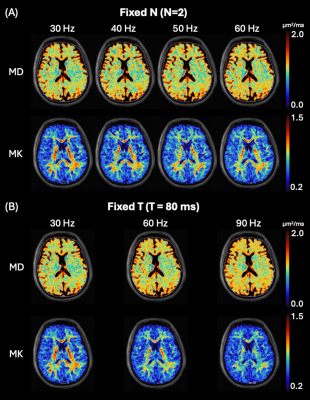 |
0135. Revealing
membrane integrity in human brain using oscillating-gradient
diffusion sequence in two frequency-varying regimes

D. Sung, W. Zhong, J. Zheng, Q. Tian, S. Huang, H-H Lee
Massachusetts General Hospital and Harvard Medical School, Charlestown, United States
Impact: We measured frequency-dependent
kurtosis in human brains using
oscillating-gradient-spin-echo sequence with either a fixed
number of oscillations or a fixed total waveform time. The
observed kurtosis frequency-dependence in two
approaches were orthogonal, providing a novel way to
evaluate water exchange.
|
The International Society for Magnetic Resonance in Medicine is accredited by the Accreditation Council for Continuing Medical Education to provide continuing medical education for physicians.